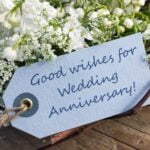What is formal wedding attire and why is it so crucial? Understanding the significance of dressing formally for weddings sets the tone for the rest of the event.
From traditional to modern interpretations, formal wedding attire plays a vital role in making the occasion memorable and elegant. In this article, we will delve into the meaning of formal wedding attire, explore traditional and modern options for both men and women, provide tips on choosing the right attire, discuss essential accessories, examine how formal attire varies based on different wedding styles, and consider etiquette and cultural considerations associated with it.
Formal wedding attire holds a special place in the world of weddings. It signifies respect for the occasion and reflects the solemnity of the commitment being celebrated. The choice of formal wear goes beyond personal style; it conveys homage to tradition and brings an extra touch of sophistication to the overall ambiance. Whether it’s a classic black-tie affair or a modern twist on formal dressing, understanding what constitutes as “formal” is essential for all involved parties.
In this comprehensive guide, we will cover everything you need to know about formal wedding attire. From timeless tuxedos to contemporary gown options, we will navigate through various choices available for brides, grooms, and guests when it comes to dressing formally for this momentous occasion. So get ready to dive into the world of elegant ensembles and discover how they contribute to creating lasting memories at weddings.
Understanding Formal Wedding Attire
Formal wedding attire is defined by a specific dress code that reflects a high level of elegance and sophistication. It is often required for weddings held in the evening or at upscale venues, and it sets the tone for a classy and refined celebration. Understanding formal wedding attire is crucial for both the bridal party and guests to ensure that everyone is appropriately dressed for the occasion.
When it comes to formal wedding attire, there are certain expectations for both men and women. For men, this typically means wearing a tuxedo or a formal suit in dark colors such as black, navy, or charcoal. A crisp white dress shirt, a conservative tie, and polished dress shoes complete the look.
Women have more flexibility with their formal wedding attire, but it usually involves wearing an elegant floor-length gown in rich fabrics like satin, silk, or chiffon. The neckline should be modest, and accessories should be tasteful yet eye-catching.
The significance of formal wedding attire lies in its ability to create a cohesive and polished aesthetic for the entire event. When all attendees adhere to the dress code, it not only elevates the overall atmosphere of the wedding but also ensures that everyone feels like part of something truly special.
Additionally, formal attire contributes to capturing timeless and exquisite photographs that will be cherished for years to come. This style of dress also pays respect to the importance of the occasion, showing appreciation for the couple’s commitment and love for each other.
Traditional Formal Wedding Attire
- Tuxedos: A tuxedo is the epitome of formal wear for men when it comes to weddings. It usually consists of a black or navy jacket with satin lapels, matching trousers, a crisp white dress shirt, and a bow tie. To complete the look, men often pair their tuxedos with patent leather shoes and other accessories such as cufflinks and pocket squares.
- Formal Suits: For those who prefer a slightly less formal alternative to a tuxedo, a formal suit is an excellent choice. A well-tailored suit in darker colors such as black, navy, or charcoal grey exudes sophistication and refinement. Paired with a dress shirt, elegant tie, and polished dress shoes, a formal suit is perfect for achieving a classic yet stylish look at a formal wedding.
- Elegant Gowns: Women’s formal wedding attire traditionally involves wearing an elegant gown that exudes grace and sophistication. Floor-length dresses in luxurious fabrics like silk or satin are commonly chosen for formal occasions. These gowns often feature intricate detailing such as beading, lace, or embellishments that add to their allure. When accessorizing, women may opt for statement jewelry pieces such as chandelier earrings or sparkling bracelets to complement their ensemble.
Modern Formal Wedding Attire
When it comes to modern formal wedding attire, there are a plethora of options available for both men and women that deviate from the traditional tuxedos and elegant gowns. Modern interpretations of formal wedding attire often embrace individuality and personal style, while still adhering to the overall dress code for the occasion.
Alternative Options for Men
For men, modern formal wedding attire can encompass a variety of alternatives to the classic tuxedo. This may include tailored suits in unconventional colors such as navy blue or charcoal grey, paired with unique accessories like patterned ties or pocket squares. Some grooms even opt for chic separates, combining different colored jackets and trousers to create a contemporary yet formal look.
Contemporary Choices for Women
In terms of modern formal wedding attire for women, there has been a shift towards non-traditional silhouettes and designs. Modern brides might choose jumpsuits or pantsuits as an alternative to traditional gowns, showcasing their individual style and breaking away from convention. Additionally, contemporary bridal designers offer a range of sleek and minimalist dresses that provide a modern take on formal wedding attire.
Gender-Neutral Options
As societal norms evolve, gender-neutral options have become increasingly popular for modern formal wedding attire. This includes ensembles that can be worn by individuals regardless of gender identity, such as elegant tailored suits or fashion-forward separates that reflect personal style without conforming to traditional gender norms.
With these modern interpretations of formal wedding attire, couples and guests have the opportunity to express their personalities while still honoring the significance of the occasion.
Ultimately, modern formal wedding attire allows individuals to embrace their personal style while participating in this timeless tradition. Whether through alternative suiting options for men, contemporary designs for women, or gender-neutral ensembles, there is no shortage of ways to showcase sophisticated and stylish looks that align with the formality of a wedding celebration.
Choosing the Right Formal Attire
When it comes to formal wedding attire, the key is to dress elegantly and appropriately for the occasion. For men, this often means wearing a tuxedo or a formal suit, while women typically opt for a sophisticated gown. However, what is formal wedding attire exactly? Formal attire is generally characterized by its elegance, sophistication, and adherence to traditional dress codes such as black-tie or white-tie events.
For guests attending a formal wedding, it’s important to carefully consider the invitation and any specific dress code mentioned. Traditional formal wedding attire typically consists of a black tuxedo with a bow tie for men and an elegant evening gown for women.
However, modern interpretations of formal attire allow for more flexibility in style and color choices. Neutral colors such as black, navy, or gray are safe choices for men’s formal wear, while women can experiment with different silhouettes and fabrics.
Brides and grooms play a crucial role in setting the tone for their wedding day attire. The bride’s dress often dictates the formality of the event, whether it’s a classic ball gown for a black-tie affair or an A-line dress for a semi-formal celebration.
Grooms should coordinate their attire with the bride’s outfit, ensuring that they complement each other in style and formality. Ultimately, selecting the perfect formal wedding attire involves considering factors such as venue, theme, and cultural traditions.
| Formal Attire Tips | Guidelines |
|---|---|
| Consider Invitation | Check if there are any specific dress code instructions on the invitation |
| Formal Colors | Oftentimes neutral colors like black or navy work well for formal events |
| Bride’s Dress Dictates | The formality of the bride’s dress sets the tone for the overall formality of the event |
Accessories
When it comes to formal wedding attire, the right accessories can elevate your look and add the perfect finishing touches. From shoes to jewelry and other embellishments, paying attention to the details is essential in creating a polished and sophisticated ensemble for a formal wedding. Here are some key accessories to consider when putting together your formal wedding attire.
Shoes
For men, a classic pair of black patent leather oxfords or loafers is the go-to choice for formal wedding attire. These shoes are timeless and elegant, perfectly complementing a tuxedo or formal suit. Women have a range of options when it comes to shoes for formal weddings – from strappy heels to elegant pumps. The key is to choose a pair that matches your dress or outfit while also being comfortable enough to allow you to dance the night away.
Jewelry
When it comes to jewelry for formal weddings, less is often more. For men, a simple watch and cufflinks can add a touch of sophistication without being overpowering. Women can opt for classic pieces such as diamond studs, pearl earrings, or a delicate necklace. The goal is to enhance your overall look without distracting from your attire.
Other Embellishments
In addition to shoes and jewelry, other embellishments like handbags, clutches, ties, pocket squares, and boutonnieres play a crucial role in completing your formal wedding ensemble. A sleek black tie or bowtie for men adds a refined touch, while women can opt for an elegant clutch or handbag that complements their gown.
By paying attention to these essential accessories and choosing them thoughtfully, you can ensure that your formal wedding attire makes a lasting impression at any special occasion. Regardless of whether the dress code calls for black-tie or white-tie attire, the right accessories will help you look and feel your best on this momentous day.
Formal Wedding Attire for Different Wedding Styles
When it comes to attending a wedding, the dress code plays a crucial role in determining the appropriate attire for the occasion. Understanding what is formal wedding attire becomes even more important when factoring in different wedding styles, such as black-tie, white-tie, or semi-formal affairs. Each of these styles carries its own set of expectations and guidelines for formal dressing, and guests must adhere to these recommendations to ensure they are appropriately attired for the event.
For a black-tie wedding, guests are expected to wear formal evening attire. For men, this typically means a tuxedo with a black bowtie, while women should opt for elegant floor-length gowns or chic cocktail dresses. While still formal in nature, a semi-formal affair allows for more flexibility in attire.
Men can choose to wear dark suits and ties, while women can opt for sophisticated cocktail dresses or dressy separates. On the other end of the spectrum, white-tie weddings require the most formal attire. This calls for men to wear tailcoats and white bowties, and women to don full-length ball gowns with gloves.
In summary, understanding how formal wedding attire can vary depending on different wedding styles is essential for guests looking to make an impression at any upcoming nuptials. By following these guidelines and being mindful of the specific requirements associated with each type of wedding style, attendees can ensure they are appropriately dressed while celebrating the special day with their loved ones.
| Formal Wedding Style | Recommended Attire |
|---|---|
| Black-Tie | Tuxedo for men; Floor-length gown or cocktail dress for women |
| Semi-Formal | Dark suit and tie for men; Cocktail dress or dressy separates for women |
| White-Tie | Tailcoat and white bowtie for men; Full-length ball gown with gloves for women |
Etiquette and Cultural Considerations
When it comes to formal wedding attire, understanding the etiquette and cultural norms associated with it is crucial. Different regions and traditions have their own set of guidelines when it comes to what is considered appropriate formal wedding attire. It’s important for guests, brides, and grooms alike to be mindful of these considerations in order to show respect and appreciation for the wedding ceremony and its cultural significance.
In some cultures, such as in certain Asian countries, red symbolizes good luck and is often a popular choice for brides’ dresses. Understanding these cultural nuances can help guests avoid unintentionally causing offense or disrespect. Similarly, in some Middle Eastern countries, modesty is highly valued, so it’s important to understand the appropriate dress code for weddings in these regions.
Additionally, certain regions may have specific traditional garments that are expected to be worn at formal weddings. For example, in many African countries, traditional attire that reflects the couple’s heritage may be a key component of formal wedding attire. By being aware of these cultural considerations, guests can ensure that they are appropriately dressed for the occasion.
Conclusion
In conclusion, understanding what formal wedding attire entails is crucial for anyone attending or planning a wedding. It goes beyond simply dressing up and reflects the respect and significance one places on the occasion.
Whether it’s the classic tuxedos and gowns or modern interpretations of formal attire, the key is to strike a balance between tradition and personal style. Ultimately, formal wedding attire is a way to honor the sacredness of marriage and celebrate love in a sophisticated and elegant manner.
As guests, brides, and grooms navigate through the process of choosing the right formal attire, it’s important to remember that etiquette and cultural considerations play a significant role. Different regions and traditions have their own norms when it comes to formal wedding attire, so being mindful of these cultural nuances is essential. Additionally, accessorizing plays a crucial role in completing any formal wedding outfit, with shoes, jewelry, and other embellishments adding the finishing touches to ensure a polished look.
The importance of understanding what is formal wedding attire cannot be overstated as it sets the tone for the entire celebration. Whether it’s an opulent black-tie affair or a more relaxed semi-formal event, selecting the appropriate attire shows reverence for the significance of the occasion. In this way, formal wedding attire becomes not just about fashion but about honoring love and commitment in style.
Frequently Asked Questions
What Is Formal Attire for a Wedding Mean?
Formal attire for a wedding typically means wearing a tuxedo or a dark suit for men, and a floor-length evening gown or a chic cocktail dress for women. It’s a way to show respect for the occasion and the couple getting married.
What Does a Guest Wear to a Formal Wedding?
As a guest to a formal wedding, it’s important to abide by the dress code and opt for elegant and sophisticated attire. Men should consider wearing a dark-colored suit or tuxedo, while women can choose from formal gowns, cocktail dresses, or dressy separates. It’s essential to avoid overly casual clothing and opt for more refined options.
What Is Formal Wedding Dress Code Example?
A formal wedding dress code example for men could include a black tuxedo, white dress shirt, bow tie, and leather dress shoes. For women, an example of formal attire could be a floor-length evening gown in a dark or neutral color, paired with elegant heels and minimal jewelry.
This type of guidance helps guests understand the level of formality expected at the event and ensures that everyone is appropriately dressed for the occasion.

Welcome to my blog about home and family. This blog is a place where I will share my thoughts, ideas, and experiences related to these important topics. I am a stay-at-home mom with two young children. I hope you enjoy reading it! and may find some helpful tips and ideas that will make your home and family life even better!





